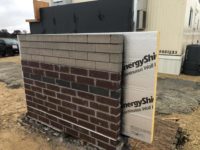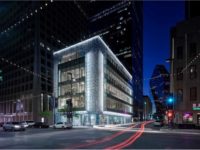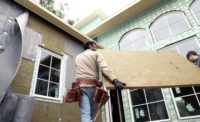In 2016, the roof of the performing arts center at Murphysboro High School in southern Illinois collapsed under the weight of heavy equipment, causing the exterior walls to buckle. No one was injured, but the incident put pressure on the school to replace the facility with a more durable structure. The ensuing project included building a new, larger facility that would accommodate 700 seats (up from 400), as well as renovating the administration area.
The designers choose to replace the original building, which had a timber roof and concrete masonry unit (CMU) walls, with a precast concrete structure, which would provide increased stability, durability, and energy efficiency. “Precast concrete was particularly welcomed in this circumstance by the school district and all parties to avoid another structural failure,” says Dirk McClure, director of business development for Enterprise Precast Concrete.
Using precast concrete also helped the construction team meet an accelerated schedule, which was particularly beneficial since the project began late in the year, says Jim Siefert, PE, senior associate for Hurst-Rosche, the architect for the project. “It put us into an early winter time frame to get the building up and in the dry,” he says. If masonry walls had been chosen, the contractor would not have been able to meet the installation deadlines due to the cold conditions. “By using precast concrete we were able to minimize the length of time it took to get the biggest part of the building up in fairly harsh winter conditions.”
Cold weather wasn’t the only challenge encountered on the project. The construction team also faced a tight jobsite, a construction zone tied to an existing building, and a parking lot that was “always full of teachers, students, and parents,” Seifert says. “Using precast concrete allowed us to minimize the disruption by allowing the contractor to complete the walls without having to shut down any of the areas for any length of time.”
Game-changing Technology
The performing arts center was one the first and largest projects in the United States to use Graphic Concrete technology, which allows designers to transfer any image or pattern onto a precast concrete surface using craft paper and a chemical retarder imprint. The designers used the technology to etch a full-scale forest of birch trees and water into three walls of the building. The imprint links the building design to the nearby tree-lined roadways, creating a park-like feel, McClure says. The walls are also lit by color-changing LED lights that wash across the building, highlighting the crisp lines and remarkably detailed patterns. “Graphic Concrete is permanent, requiring little to no maintenance, as opposed to a mural or painted finish, and it is environmentally friendly,” McClure says. “This technology is quickly becoming a game changer in the architectural precast concrete industry.”




